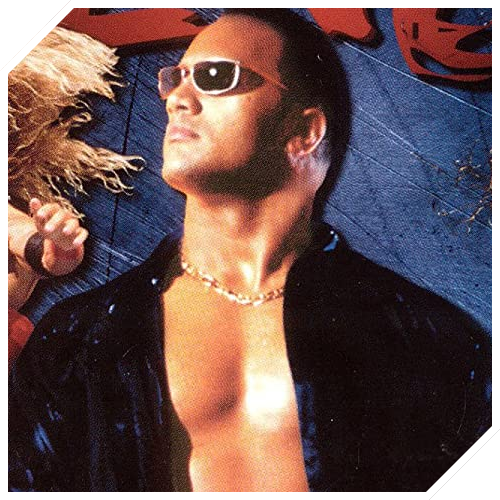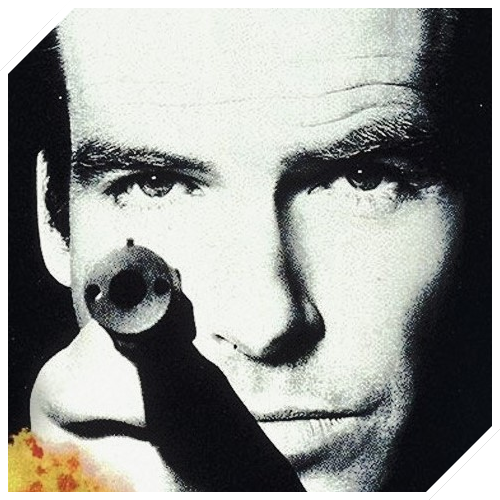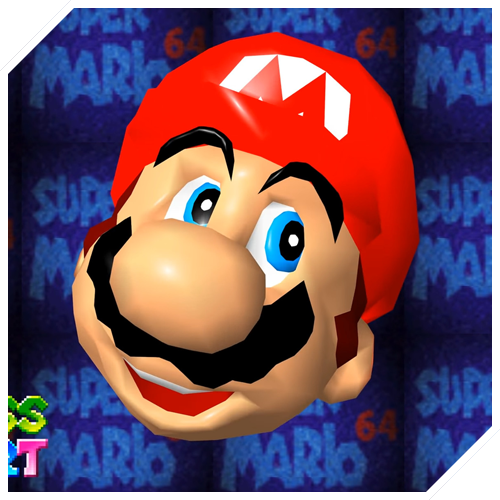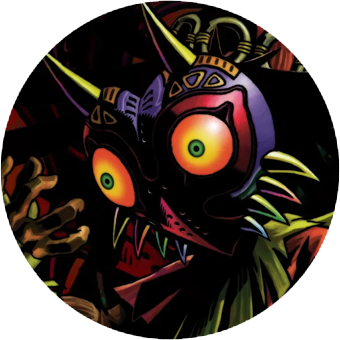
A Leap of Faith...

I have to admit, this is the generation I personally broke off from the Big N, before reacquainting myself with the Japanese gaming company in their next venture. The war here was heated as a third party entered the market; unintentionally lead by Nintendo themselves. Primarily developing the Disc based follow-up to the Super Nintendo Entertainment System, the Nintendo PlayStation was set to be a mega blockbuster announcement with the partnership between two Japanese conglomerates manufacturing the next generation of gaming. It’s been well publicised the falling out the two parties had after Nintendo quietly announced their intention to partner with Philips, and scrap the plans to release the PlayStation entirely. The “Ultra 64” sought to deliver the most immersive gaming experience at home, compartmentalising the arcade machine into a tiny box for commercial use.
Nintendo were set on demonstrating high calibre gaming at low latency and zero load times, but would come at the expense of cartridge fabrication and assembly, plus the size of these games that could only be limited to the digital tape’s EPROM. Quality reduction was a sacrifice they were willing to take to prevent piracy; something Nintendo had struggled with in the Chinese Market and licensing agreements that were prevalent, but has been more-or-less questioned in modern gaming. Giving this article the sub-header “A Leap of Faith” is apropos considering that the Big N were hedging their bets, knowing full well that Sony were continuing work on their first home entertainment console, readying to hit the market before the Ultra 64 had even begun production while SEGA were midway through the Saturn’s lifecycle, but were working steadfast on the Dreamcast.
On June 23, 1996 the Nintendo 64 was released in Japan, selling over 500,000 units in its first three months on the market. It was the hottest ticket item, and people all over the globe tries to get their hands on one early. Its initial launch saw units expedited to the U.S. for celebrities, and rental companies that charged a pretty penny to consumers who could not wait to experience a new wave of gaming. While Nintendo tried to out-do the Sony PlayStation, it was two years too late. The market was already established and gamers were tied down to the new format that allowed PlayStation to exponentially overtake Nintendo as the leader in the console wars without trying. Sony may have had the last laugh, but the Nintendo 64 bought some instant classics to the table including some new original IP’s and unexpected adaptations that have stood the test of time.
#5 - WWF No Mercy

The Nintendo 64 had become home to the wrestling genre, after publisher THQ had released less than a handful of titles from competing companies WWF and WCW on the Sony PlayStation. WCW vs. The World was the first of many that adopted the Virtual Pro Wrestling engine from developer Asmik Ace, and was critically panned by fans for its lack of realism, and insanely jarring gameplay. Releasing two subsequent WCW based titles under the same engine, it lacked any depth and was a quick cash grab for the company to reach their license agreement with the Turner based Entertainment group. On the other end of the spectrum, WCW vs. nWo: World Tour was released in 1997, and would be the foundations of Asmik Ace & AKI’s revolutionary engine going forward. With only two titles under their agreement with WCW to be developed for the N64, THQ had negotiated a deal with WCW’s direct competitor, the World Wrestling Federation (WWF, now the WWE).
WCW went on to work with Electronic Arts, releasing Mayhem & Backstage Assault, both panned in comparison to their predecessors and competitors. Asmik & AKI had repurposed their then WCW-based engine to fit WWF themes and wrestlers, improving on overall presentation and assets. A flexible customisation system was included in WWF Wrestlemania 2000, allowing players to update wrestlers looks and move-sets, entrance music and more. But it wasn’t until 2000, where the engine had peaked with the release of WWF No Mercy. The title is considered to this day as the best wrestling game of all time. A hit with the fans, and favourable with casual players due to its ability to make your own characters, create your own stories, customise championship belts, include a special guest referee that could win the match (a reference to Stone Cold Steve Austin winning a match he himself refereed in 1998), and the newest addition to its gameplay loop, tag-team finishers. The title continues to have a thriving online community to this day, modifying rom files to include the modern rosters of both WWE and AEW.
#4 - Banjo-Kazooie

Can you believe that Banjo-Kazooie’s development cycle began all the way back to just after the release Donkey Kong Country 2? I mean it wasn’t too far between releases, but that was an entirely different generation cycle back then. Games were commonly annualised based on existing engines – mostly successful – that sequels were no brainers. Code named “Project Dream”, the premise was actually set to be a human boy named Edson, who lived in a fairy-tale land but had caused issues with pirates that seeked to pillage its inhabitants. Quite the difference in story development, am I right? While RARE had wanted to pitch the title as a remake of LucasArts’ Dream, and aimed to release the title as a Super Nintendo platformer, Nintendo and lead designer Gregg Mayles gave the directive to scale back and wait for the release of the Ultra 64, while scrapping the initial idea for an original story. Banjo-Kazooie became a household name overnight, with its sensational gameplay loop and acclaimed fantasy adventure that broke the brand away from being the “Goldeneye” guys, or the “DKC” developers.
This was RARE’s breakout from pre-existing properties of recent memory during that period. Besides Killer Instinct, there weren’t many other games that were as renowned or commercially associated with the Miami based studio. The odd-couple pairing of a friendly, Banjo-playing honey bear and the deep pessimism of a sarcastic breegull, living in her pal’s backpack had the potential to make for exposition and banter between an inquisitively comical cast of characters, living in the fairy-tale land of Spiral Mountain, overruled by a Wicked Witch known as Gruntilda, who has kidnapped Banjo’s younger sister with hopes of stealing her youth. A tale as old as time, amalgamated with the innocence of childish dialogue cemented the title as one of the greatest of all time, unintentionally creating a bankable franchise. RARE’s acquisition by Microsoft has lead it astray from its roots with most of its legacy being withheld in XBOX’s subscription based service Game Pass, but its still fantastic to be able to access and play all three (yes even Nuts & Bolts) at anytime we choose.
#3 - Goldeneye 007

A consistent accolade that’s been attached since its release, Goldeneye 007 arguably remains the greatest first-person shooter to ever be developed. An inspiration that birthed an abundance of action games, titles like this are an anomaly. Adaptations have the reputation to be quick cash grabs, with barely any quality assurance applied, but we were still within a phase where games that were being released on the hardware were parsed through the intelligence systems of Nintendo’s hierarchy. Given the title was assigned to RARE, it was without question that Goldeneye 007 stood a chance to be a fantastic FPS title, but none could have envisioned the significance it would have on the industry. Based beat-by-beat on Pierce Brosnan’s inaugural performance as world renowned Special Agent 007, GoldenEye’s legacy is forever engrained with its immeasurable influence and appeal to fans that own or have owned the Nintendo 64.
It pushed hardware design specifications that Nintendo had preconceived but initiated themselves. The N64 Controller entailed a Z trigger, the first of its kind that mimicked the use of an armed weapon to be fired. A catalogue of firearms that had a respective use in each set piece, placed appropriately across each map allowed for full accessibility and seamless progression throughout its campaign. From handgun, shotgun, rifle, even using the laser off Bond’s watch, it was a major thrill to be James Bond, in a 3D environment. And of course, in RARE fashion (all the pun intended), quirky and zany unlockables included to wither make the game easier to play, or miserably difficult to overcome. Big head mode had become a fan-favourite, ballooning the enemy’s cranium, allowing an easier target to be met, while one-shot kills were also a blessing in disguise. Multiplayer between friends only broke longstanding relationships, with split-screen 1V1 FPS being born here. No Slappers please.
#2 - Super Mario 64

A given that we would see Mario enter the 3D world of gaming, Super Mario 64’s release was pivotal in the success of the N64’s launch period. Given there was a staggeringly low choice of titles to choose from (Pilotwings 64 being the other), it was a no brainer for gamers to pick up gaming’s biggest mascot’s greatest adventure yet for their new piece of kit. Mario in 3D had been long tested before the release of the Nintendo 64, with rumours suggesting a title was in development alongside Star Fox/Starwing for the SNES. This was debunked given limitations of the rail shooter were extreme, and the processing power of the newly introduced GSU-1 & SuperFX chip in SNES cartridges were incapable of demonstrating such an experience. Super Mario RPG was as close to a 3D Mario adventure we were going to see on the Super Nintendo, until the release of the Ultra 64. Miyamoto tried his hand at programming Super Mario FX, but it was at no avail and had conceded.
Super Mario 64 began development in 1994, with the Kyoto based studio assigning their biggest team yet to a title with over 20 people to one game. This biggest distinction that presented a disparity excluded trademarks of the Super Mario platforming experience of old. The omission of Super Mushrooms, Question blocks, and other hallmark idiosyncrasies that had been associated with the Mario brand for years were stripped. This in part of hardware limitation, cycled in a new format that proceeded to become the norm in Mario 3D adventure titles. 1-UP mushrooms remained, along with Coins that became a health replenishment system alongside Mario’s health gauge which would deplete if hit by enemies one frame at a time. Flagpoles and Goal tape were abandoned for Star collection, with Mario revisiting levels multiple times to collect each and every Star in hopes of opening the locked doors in Peach’s castle. It’s become a staple in the speedrunning community, with World record times as fast as 6 Minutes.
#1 - The Legend of Zelda: Ocarina of Time

The Legend of Zelda’s legacy had been played out to second fiddle against the red-capped plumber, but with Zelda: A Link to the Past, that notion had been put to rest only to be further cemented by Ocarina of Time’s outstanding premise and tantalising action. Building off the bedrock of Super Mario 64’s game engine, Ocarina of Time is held in high regard, by esteemed members of gaming history, noting the title to be a masterpiece and an untouchable demonstration of gaming perfection for its period. I concur, The Legend of Zelda: Ocarina of Time is a masterclass; a league of its own that gets likened or applied to by name, not by accolade to other games. When talking about titles like Naughty Dog’s The Last of Us, I continue to say that it was the PlayStation 3’s Ocarina of Time, akin to a Tour de ‘force or magnum opus; it can only be described as is, not as achieved. Exuding a certain aesthetic that was definitely gorgeous, lush and vibrant, the high hills of a dusky Hyrule Valley was a treat to traverse on horseback. The escapade between landmarks made for an incredibly broad trudge, with mission objectives laid out and goals clearly concise and coerced to make our emerald clad hero, back-and-forth between fetch quest to fight.
Some of the most unconventional areas in gaming include the insides of an elderly Deku Tree, and the digestive tract of Jabu-Jabu. Then again, it’s always been in the series’ nature to tear apart all logic and realism, delivering illogical fantasy and thrillrides that make us think, thrive, encourage or squirm. These emotions alone attribute to what made Ocarina of Time a staple to the Nintendo 64’s legacy. The big gold cartridge returned, skipping over the SFC/SNES generation, with collectors coming out in droves looking to add it to their library, with the special edition now priced upwards of $300AUD on ebay. It had such an impact on an entire generation, that it was remade for the Nintendo3DS in 2011, demonstrating the hardware’s key mechanic with gamers able to experience a revamped Ocarina of Time in stereoscopic 3D without the glasses. Some may argue that #1 should be given to its sequel, Majora’s Mask and sure the thriller may have a case that overrides its predecessor, but due to it having such an emphatic statement over the aforementioned, The Legend of Zelda: Ocarina of Time will forever clasp itself to the accolade of ‘greatest video game of all time’.
Honourable Mentions:

Conker’s Bad Fur Day (RARE, 2001)
Paper Mario (Intelligent Systems, 2000)


Zelda: Majora’s Mask (Nintendo, 2000)
Pokemon Snap (HAL Laboratory, 2000)


Mario Kart 64 (Nintendo, 1997)
Perfect Dark (RARE, 2000)


